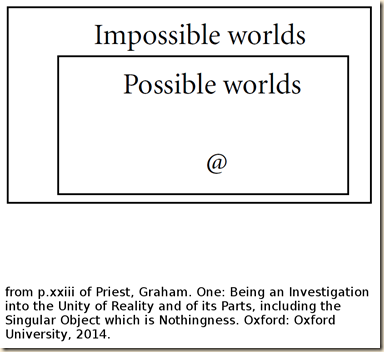by Corry Shores
[Search Blog Here. Index-tags are found on the bottom of the left column.]
[Central Entry Directory]
[Logic & Semantics, Entry Directory]
[Gottlob Frege, Entry Directory]
[Frege, Begriffsschrift, Chapter 1, Entry Directory]
[The following is summary. All boldface, underlying and bracketed commentary are my own.]
Gottlob Frege
Begriffsschrift, Chapter 1
(Geach transl.)
§5 Conditionality
Brief Summary:
Frege explains how to notate in his system a conditional judgment. B implies A would look like:
Summary
[Frege is providing a notation system for describing conceptual relations. He will now look at conditional judgments (if .. then …). Let’s first recall their truth table.
p, q | p => q
T, T | T
T, F | F
F, T | T
F, F | T
As you can see, the conditional is false when the antecedent is true but the consequent is false.]
Frege will now describe the notation for conditional judgments. He has us consider contents A and B. [In the conventional truth table formulation above, p, which precedes q alphabetically, is what implies q. If in the following formulation by Frege we in like manner make A imply B, then I cannot explain what he is saying. According to Jean-Yves Béziau in “A History of Truth Values,” (p.257) this should be interpreted as B implies A, and since that works, we will go with it. So we could make the table now:
A, B | B => A
T, T | T
T, F | T
F, T | F
F, F | T
]
Frege writes:
If A and B stand for possible contents of judgment (§ 2), we have the four following possibilities:
(i) A affirmed, B affirmed;
(ii) A affirmed, B denied;
(iii) A denied, B affirmed;
(iv) A denied, B denied.stands for the judgment that the third possibility is not realized, but one of the other three is. (5, red type mine)
[So because we are not affirming the antecedent while denying the consequent, this is valid, and so it can take the vertical judgment line.] But if we deny the truth of this consequence relation [and thus say it is invalid] then we must be affirming the antecedent while denying the consequent, and it will not receive the vertical line, even though its conceptual content is still expressible in this notation:
But we will consider that the above judgment is affirmed, and Frege will emphasize three points on this matter:
1) A is to be affirmed. [note that in the truth tables that when the consequent is affirmed, it does not matter whether or not the antecedent is affirmed or denied, as both produce valid judgments].
A is to be affirmed.- In this case the content of B is quite indifferent. Thus, let ⊢ A mean: 3 x 7 = 21; let B stand for the circumstance of the sun's shining. Here only the first two cases out of the four mentioned above are possible. A causal p. 6] connexion need not exist between the two contents. (5)
2) B is to be denied. [Notice in the truth table that when the antecedent is denied, that it does not matter what we say of the consequent; both cases will produce true judgments]
In this case the content of A is indifferent. E.g. let B stand for the circumstance of perpetual motion's being possible, and A for the circumstance of the world's | being infinite. Here only the second and fourth of the four cases are possible. A causal connexion between A and B need not exist. (5-6)
3) We may form the judgment
without knowing whether A and B are to be affirmed or denied. [This would be the case for example in a situation where if B holds then A would as well, but we do not know whether or not either is holding in actuality.] In such a case, we may formulate the conjunction with ‘if’.
'if the Moon is in quadrature with the Sun, then she appears semicircular.' The causal connexion implicit in the word 'if' is, however, not expressed by our symbolism; although a judgment of this sort can be made only on the ground of such a connexion. For this connexion is something general, and as yet we have no expression for generality. (6)
Frege then explains the individual lines of the notation for the conditional judgment. We already know that the vertical on the far left is the judgment stroke for the conceptual content of the conditional.
[We begin with B implies A. Then we turn that into a judgment, B implies A is a fact, and in the notation add the left-most vertical line to the rest of the symbol.] The vertical line connecting A and B is the conditional stroke.
[It says perhaps, the condition for B is A (or A conditions B), thus if you have B, you will also have A, or, B implies A.] The horizontal line to the left of the conditional stroke is the content stroke for the conceptual content of the conditional itself.
He writes: “any symbol that is meant to relate to the content of the expression as a whole will be attached to this content-stroke” (6). [The content stroke of the conditional perhaps says, the given lower subcontent is conditioned by the upper, but not yet judging that ‘it is a fact’.] The horizontal line between A and the conditional stroke is the content stroke of A, and likewise for B.
Frege, Gottlob. “Begriffsschrift (Chapter 1)”. Transl. P.T. Geach. In Translations from the Philosophical Writings of Gottlob Frege. Eds. P.T. Geach and Max Black. Oxford: Basil Blackwell, 1960, second edition (1952 first edition).
Jean-Yves Béziau. “A History of Truth Values.” In Logic: A History of Its Conceptual Contents. Dov M. Gabbay, Francis Jeffry Pelletier, and John Woods, eds. Amsterdam / London: North Holland (Elsevier), 2012










































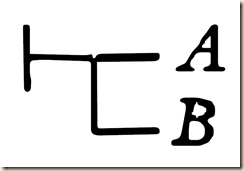
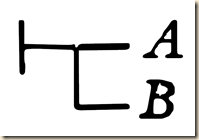

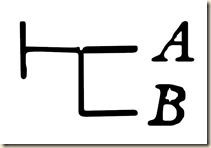
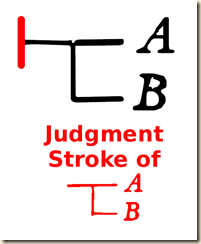
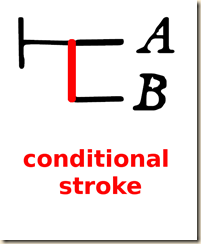

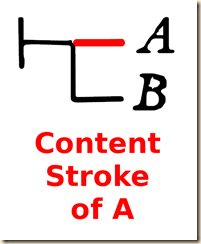
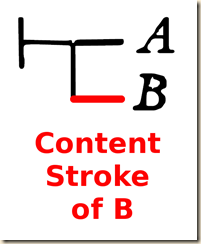
![image_thumb[4] image_thumb[4]](http://lh5.ggpht.com/-us65ZHfjyyw/VGb8I9rXsiI/AAAAAAAAPds/1NHVGjOzhOw/image_thumb%25255B4%25255D_thumb.png?imgmax=800)

![image_thumb[2] image_thumb[2]](http://lh5.ggpht.com/-bYIQAu-FHY4/VGb8LDuaHEI/AAAAAAAAPeI/Oeh6xqmZEWE/image_thumb%25255B2%25255D_thumb.png?imgmax=800)
![image_thumb[3] image_thumb[3]](http://lh5.ggpht.com/-o2lTvUkn2PU/VGb8MCPa_pI/AAAAAAAAPeY/WQg30nXEN2E/image_thumb%25255B3%25255D_thumb%25255B1%25255D.png?imgmax=800)
